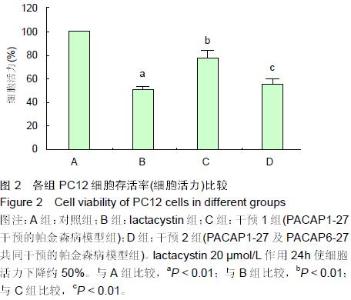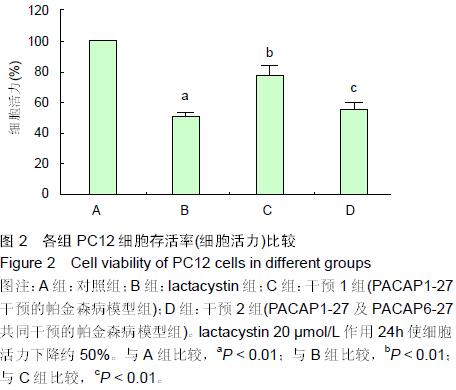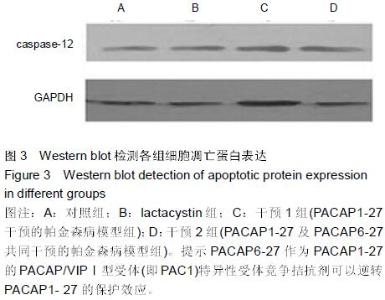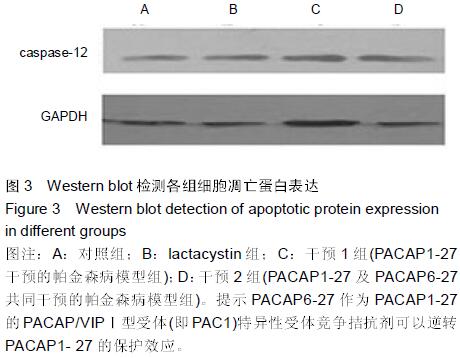| [1] Ogata K, Shintani N, Hayata-Takano A, et al. PACAP enhances axon outgrowth in cultured hippocampal neurons to a comparable extent as BDNF.PLoS One. 2015;10(3):e0120526.
[2] Hwang O.Role of oxidative stress in Parkinson’s disease. Exp Neurobiol.2013; 22(1):11-17.
[3] Han P, Tang Z, Yin J, et al. Pituitary adenylat cyclase– activating polypeptide protects against β-amyloid toxicity. Neurobiol Aging.2014;35(9): 2064-2071.
[4] Yu R, Zeng Z, Guo X, The TAT peptide endows PACAP with an enhanced ability to traverse bio-barriers.Neuroscience letters.2012;527(1):1-5.
[5] Nonaka N, Farr SA, Nakamachi T, et al. Intranasal administration of PACAP: uptake by brain and regional brain targeting with cyclodextrins.Peptides.2012;36(2):168-175.
[6] 王岚,孙圣刚,曹学兵,等.泛素蛋白酶体抑制剂诱发多巴胺能神经元内质网应激反应及其凋亡的作用[J].中风与神经疾病杂志, 2006,23(5):516-519.
[7] Atkin G, Paulson H. Ubiquitin pathways in neurodegenerative disease. Front Mol Neurosci.2014; 7:63.
[8] Hirsch EC, Jenner P, Przedborski S. Pathogenesis of Parkinson’s disease. Mov Disord.2013; 28(1):24-30.
[9] Schapira AH, Jenner P.Etiology and pathogenesis of Parkinson’s disease.Mov Disord.2011;26(6):1049-1055.
[10] Perier C, Bové J, Vila M. Mitochondria and programmed cell death in Parkinson’s disease:apoptosis and beyond. Antioxid Redox Signal.2012;16(9):883-895.
[11] Goedert M, Spillantini MG, Del Tredici K,et al. 100 years of Lewy pathology. Nat Rev Neurol. 2013;9(1):13-24.
[12] Luk KC, Kehm VM, Zhang B, et al.Intracerebral inoculation of pathological α-synuclein initiates a rapidly progressive neurodegenerative α-synucleinopathy in mice. J Exp Med. 2012; 209(5):975-986.
[13] 张克忠,蒋雨平,丁新生.应用蛋白酶体抑制剂lactacystin建立有Lewy体的帕金森病大鼠模型[J].临床神经病学杂志,2006;19(5): 358-361.
[14] Rideout HJ, Lang-Rollin IC, Savalle M, et al. Dopaminergic neorons in rat ventral midbrain cultures undergo selective apoptosis and form inclusions, but do not up-regulate iHSP70, following proteasomal inhibition.J Neurochem. 2005; 93(5): 1304-1313.
[15] Kansara S, Trivedi A, Chen S,et al. Early diagnosis and therapy of Parkinson’s disease: can disease progression be curbed? J Neural Transm. 2013;120(1):197-210.
[16] 陈生弟,王刚.帕金森病的实验研究进展[J].中华老年医学杂志, 2004;23(7):447-449.
[17] [Onoue S, Endo K, Ohshima K,et al.The neuropeptide PACAP attenuates beta-amyloid (1-42)-induced toxicity in PC12 cells. Peptides.2002;23(8): 1471-1478.
[18] 桂兰润,周岩, 张炳烈,等.垂体腺苷环化酶激活多肽抑制β淀粉样蛋白对Neuro-2a细胞神经毒性作用的机制[J].生理学报,2003, 55(1):42-46.
[19] Costa RO, Ferreiro E, Cardoso SM,et al. ER stress-mediated apoptotic pathway induced by Abeta peptide requires the presence of functional mitochondria.J Alzheimer’s Dis. 2010; 20(2):625-636.
[20] Umeda T, Tomiyama T, Sakama N,et al. Intraneuronal amyloid β oligomers cause cell death via endoplasmic reticulum stress, endosomal/lysosomal leakage, and mitochondrial dysfunction in vivo. J Neurosci Res. 2011;89(7):1031-1042.
[21] Nakagawa T, Zhu H, Morishima N, et al. Caspase -12 mediates ER-specific apoptosis and cytotoxicity by amyloidbeta. J Nature.2000;403(6765):98-103.
[22] Shen X, Zhang K, Kaufman RJ. The unfolded protein response--a stress signaling pathway of the endoplasmic reticulum. J Chem Neuroanat.2004;28(1-2):79-92.
[23] Momoi T. Caspases involved in ER stress-mediated cell death. J Chem Neuroanat. 2004;28(1-2):101-105.
[24] Benbrook DM,Long A.Integration of autophagy, proteasomal degradation, unfolded protein response and apoptosis. Exp Oncol.2012;34(3):286-297.
[25] Choy MS, Chen MJ, Manikandan J,et al. Up-regulation of endoplasmic reticulum stress-related genes during the early phase of treatment of cultured cortical neurons by the proteasomal inhibitor lactacystin.J Cell Physiol. 2011;226(2): 494-510.
[26] Ishige K,Takagi N,Imai T,et al.Role of caspase-12 in amyloid beta-peptide-induced toxicity in organotypic hippocampal slices cultured for long periods. J Pharmacol Sci.2007;104(1): 46-55. |





